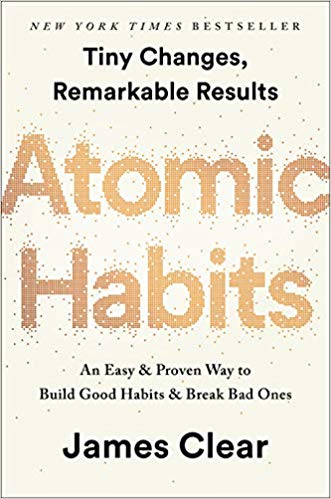Atomic Habits is a fantastic book loaded with tangible activities to set yourself up for success. Opportunity, success, and results don’t just happen. Just as Thomas A Edison said, “Opportunity is missed by most people because it is dressed in overalls and looks like work”. As humans, discipline is NOT natural. Habits are NOT natural. They require intentional effort, design, and discipline. Atomic Habits takes numerous approaches and classic activities that frequently are designed in coaching to support people to make things happen.
This Part II shares some keys from the Dean’s List Atomic Habits Summary. Review these activities and consider which strategies you could use to level up your performance. (Part I here)
#5) Make it Easy or Obvious, Satisfying and Attractive. This means to remove barriers that get in your way of doing the activity or habit (easy). When you go to do the habit include something that gives a sense of winning or success (satisfying). Lastly, make it attractive, something that makes you feel good while doing it. Example, if I want to have a power “writing” time I might arrange to meet a buddy at the coffee shop at 9 am every Monday (supports making it easy – where and when is already decided and making myself get this is important so I can meet up with my buddy). Then publishing a blog or post at the end of the session will make it satisfying and drinking my favorite beverage while working will make it attractive or feel good to be doing this habit/activity.
#6) Track habits with a habit tracker. There are TONS of habit trackers, even a google form can be used to track. List the habits you want to form or the ones you want to get rid of, then mark daily when you are successful with each. Some people just do hashtags on a paper calendar, others do charts or use apps. It is important it is visible. It is important to not go crazy and have too many habits you are putting into place at once. The ideal is ONE habit, maybe TWO. Experience success there first and then build on it.
#7) The Two Minute Rule. New habits should have some “variations” that take less than two minutes to do. While the habit might take more time to do fully, you want to be able to START. The start can take two minutes. This helps you to start no matter what. Every day, always do two minutes of the golden habit. Start small and build on that. No matter what do the “start” two-minute activity of this habit. If your goal is to drink 8 glasses of water a day, make sure to start with one and build on it.
#8) The Goldilocks Rule. Human experience peaks motivation when working on the edge of their current abilities – not too hard and not too easy. Consider where you are with your desired habit. What is not too hard, not too easy but just enough of a challenge. That is your “bar” to start. You want to aim to work where you are just slightly challenged from your current level. This supports the skill and motivation level. It is challenging to stick with things, so start with challenges where you can enjoy success and build on it.
#9)Habit Stacking. I love habit stacking! This is a solid strategy to support achieving the new habit you hope to implement. If you need to remember to take a new supplement, take it after you brush your teeth each AM (which you NEVER miss). It is critical to think about habits you have and are consistent with. Build on those habits and grow the routine around that.
#10) Temptation Bundling. This is a strategy that partners habits you have that might not be as constructive but you WANT TO DO (ie TV, social media, going to the pantry, etc.) with habits you NEED to do. Much like Habit Stacking, it is about putting these things together and using the WANT as a reward for doing the NEEDED habit. So you want some chocolate but you have been trying to drink more water. You go to the pantry for the chocolate and there is a note and gallon of water. You have one glass of water (NEED) and then you can have a piece of chocolate (WANT). This can be combined with Habit Stacking. For example, I brush my teeth, take a new supplement, drink a glass of water and enjoy a mocha (coffee and chocolate). To build on this combine it with habit tracking and put an AM checklist for teeth, supplement, water, mocha to track each AM.
#11) Have an Implementation Intention. I will _____________ at _____________ (where)___________. I will write for my book at Starbucks every morning from 7-8. I will study psychology at 5:00 at the dining room table nightly. Having a plan removes decisions to be made and keeps it simple to execute and stay loyal to your goals and intentions.
Strategies are key to support developing and executing the behavior and habits you want. Again, as humans, we are not naturally disciplined. As humans, however, we are wired to operate by the subconscious. When we develop habits and systems to support habits, the effort moves from conscious effort to subconscious effort, making it easier to sustain and execute the desired activities for your life. It takes intention and effort but is worth it. Don’t fall into the trap of thinking you can just “force” yourself to do it or it will happen naturally if it is really supposed to happen. People who get things done, use these habits and strategies. Pick one strategy you want to try. You can do it!!
(To hear more about this check out the book Atomic Habits or on Audible the Atomic Habits Summary from the Dean’s Library)






